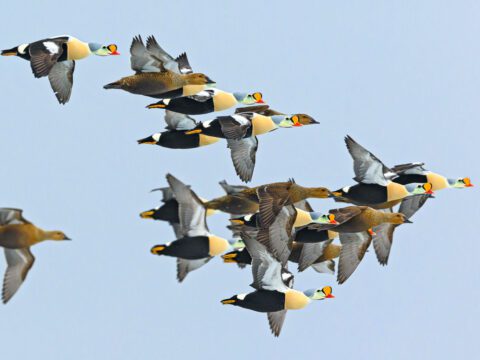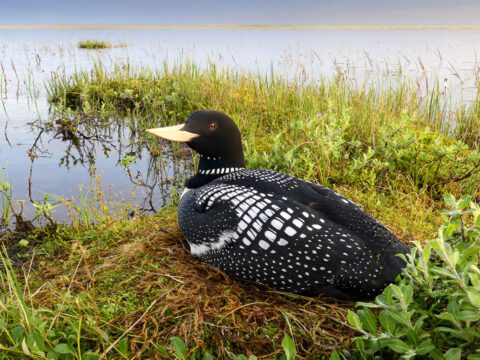The U.S. Keeps Making Promises to Oil Companies. The Birds of Teshekpuk Lake Need Promises, Too.
In the nearly continuous daylight of Alaskan summer, millions of breeding shorebirds cram into the wetlands of Teshekpuk Lake, arctic Alaska's largest lake. The spectacle exceeds the Arctic National Wildlife Refuge in terms of importance to migratory waterbirds. But permanent habitat protections have been hard to come by.
April 22, 2024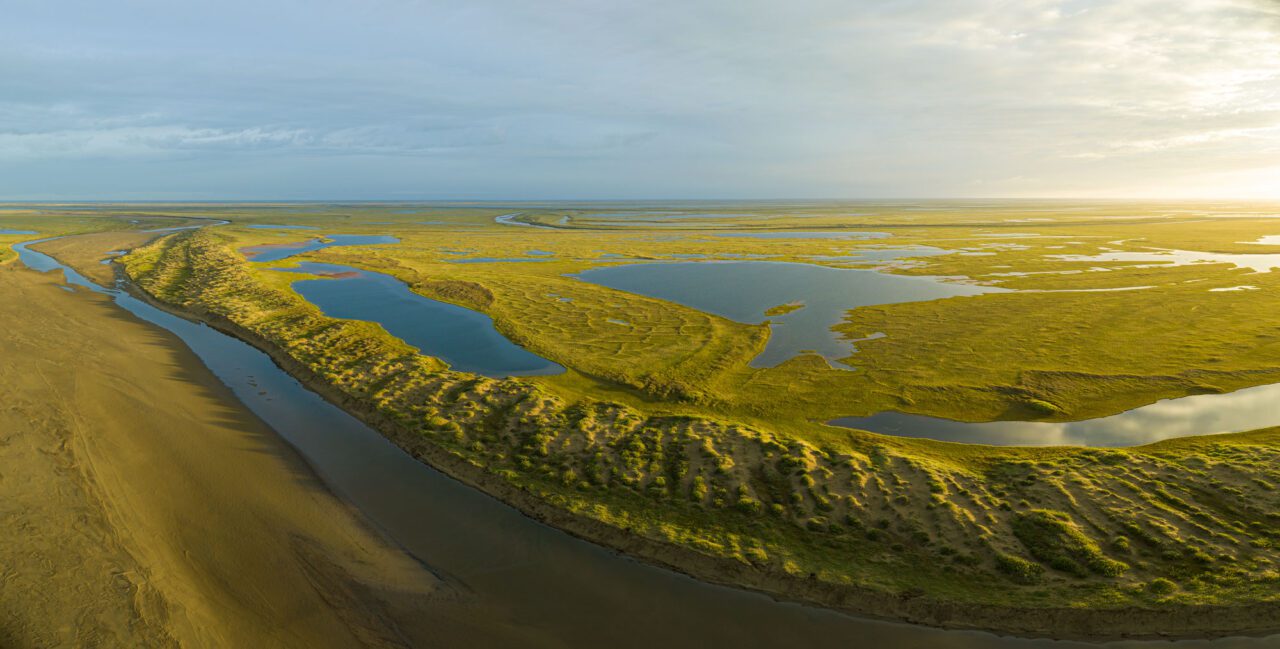
Update: In April 2024, the U.S. Department of the Interior under the Biden administration announced rules codifying protections for the existing 13.3 million acres of Special Areas in the National Petroleum Reserve–Alaska, limiting future oil and gas leasing and industrial development. Additionally, the Bureau of Land Management announced a process will soon start to consider expanding or adding additional Special Areas within the NPR–A. The decision did not affect the Willow project, a major new oil development that the Biden administration approved in 2023, which lies just east of the areas protected in the 2024 announcement.
Originally published March 31, 2024; updated April 22, 2024. From the Spring 2024 issue of Living Bird magazine. Subscribe now.
Almost 30 years ago, as an aspiring 25-year-old wildlife photographer, I took my camera north along Alaska’s Dalton Highway to catch my first glimpse of muskox, Arctic tundra, and the region’s bountiful birdlife. Although I followed a corridor built in the 1970s to service the Prudhoe Bay oil fields and trans-Alaska pipeline, as I passed the last spruce tree and crossed the Brooks Range, I felt like I was entering a wilderness unknown. I was naive in many ways, but thrilled by the landscape, its inhabitants, and the beckoning horizons.
In subsequent years, and more than 15 return visits to the coastal plain of Alaska, I’ve come to know the region as not just a wild place: it’s also a land of people, machines, and aggressive corporate ambition. A large swath of the central coastal plain is a massive industrial oilfield complex. Its scale is mostly hidden from public view behind gated roads, but its glow on the horizon is visible by its closest human neighbors as they maintain their hunting and gathering traditions on the land. In fact, the lights can be seen from space.
In stark contrast, to the west of the oilfields lies the single largest expanse of undisturbed land in the United States—the 23-million-acre National Petroleum Reserve–Alaska. Despite its misleading name, the vast tundra and wetlands here are a haven for wildlife that has remained virtually pristine. But it’s not always the empty wilderness that it appears to be on a map.
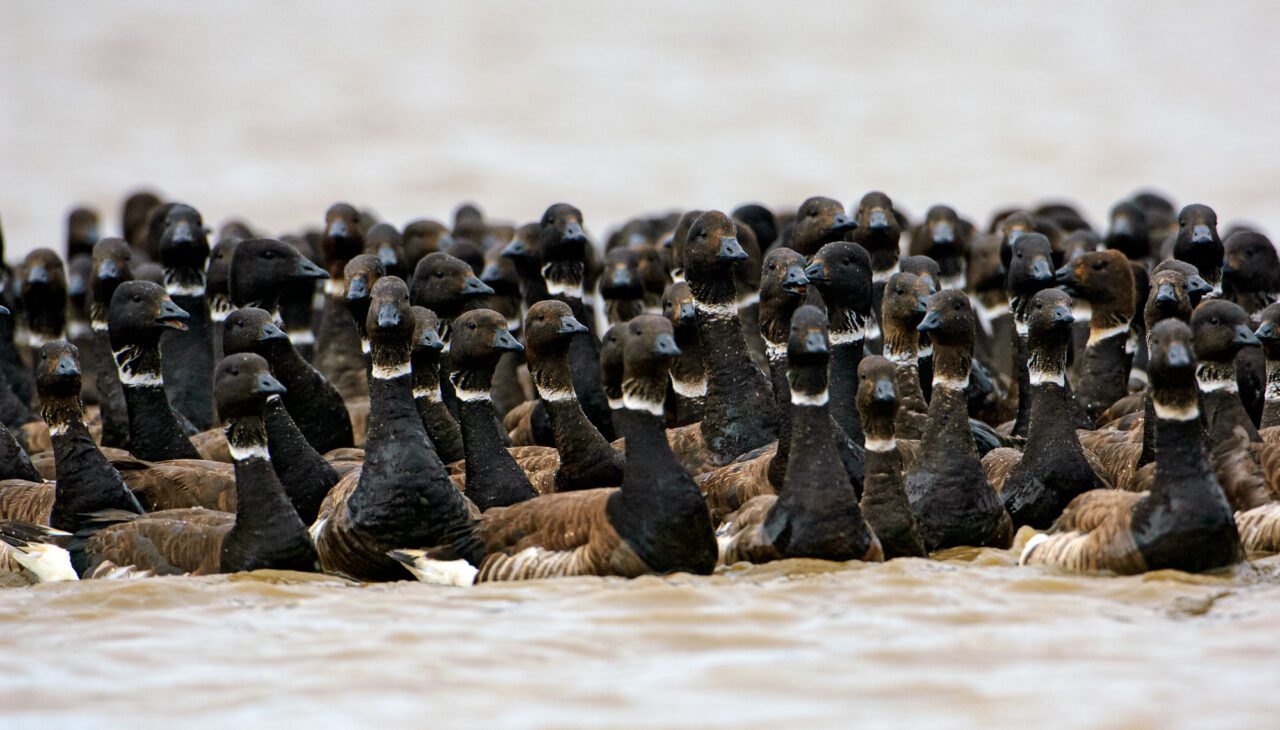
In summer, the NPR-A is crisscrossed by small aircraft carrying scientists of every discipline, measuring, studying, and recording the number of new caribou calves in its herds, the numbers of Pacific Black Brant arriving to molt, the distribution of fish in its lakes, and the composition of the permafrost just below the surface. Neighboring communities visit these ancestral lands to hunt and fish. In winter, the dark quiet of the Arctic night is penetrated by fleets of company snow vehicles searching for oil and detonating seismic blasts.
Despite these incursions, the NPR-A is still hiding wolverine and wolf in its riverine thickets, still traversed by the hooves of caribou and muskox, and at times still an immense space of impenetrable silence. The land here is wild, but always being watched and planned for.
In the summer of 2022, I was part of a team of cinematographers asked by the Cornell Lab of Ornithology, in partnership with the Campion Foundation, to visually document the wild landscape within the Teshekpuk Lake Wetlands region of the NPR-A. We set up a remote field camp along the Ikpikpuk River, and for six weeks we slogged across the tundra filming the lives of the animals, especially the birds—many of which migrate here from all over the world to find mates, breed, and raise their young.
GERRIT VYN: We’re in an extremely remote part of the United States Not many people get to come here. For someone who loves birds to walk around out here is thrilling. The more you walk around you start finding these birds on nests everywhere [Music]
In some cases these tiny birds who have traveled five six seven thousand miles over and over in their lifetimes to reproduce up here and this is the most important part of their lives [Music]
We’re about 15 miles west of Teshekpuk Lake on the Arctic Coastal Plain in Alaska. We’re a group of photographers and filmmakers; we’re here to document the bird life particularly that come here every year to nest. Birds from all over the world.
From where I’m sitting everything just looks pretty much flat and covered with sedges and grasses but from the air this landscape is absolutely spectacular [Music]
Most people know that a lot of birds travel north in the summer to nest. Many go to the Arctic but what a lot of people don’t think about is that most of these birds are waterbirds. They’re waterfowl, they’re shorebirds, they’re mostly wetland dependent. And across the Arctic wetlands are actually relatively scarce.
[Map graphic showing Alaska, Brooks Range, and outlines of National Petroleum Reserve-Alaska (NPR-A), and Arctic National Wildlife Refuge (ANWR)] [Map graphic zooms in on NPR-A showing location of Teshekpuk Lake] This region of northern Alaska and the Arctic Coastal Plain is one of the largest assemblages of tundra wetlands in the Arctic. [Music] There’s a tremendous diversity of wetlands out here from big lakes that hold fish to smaller sloughs to these polygon wetlands created by permafrost and freezing and thawing to big expanses of wet sedge meadow.It’s a very diverse and productive ecosystem, so just sitting here looking out in the tundra I can see birds that have literally traveled here from different corners of the Earth. We’ve got Pectoral Sandpipers which come here all the way from Argentina and Bolivia. We have Red Phalaropes nesting right here by camp—they live almost their entire life out at sea except for this brief period when they’re here breeding. Then we’ve got the Semipalmated Sandpiper, weighs about as much as two nickels. They nest here every year and then they end up on the northern coast of South America in places like Venezuela.
We have three different species of loons here. They’re all fantastically beautiful to look at. The Yellow-billed Loon is one of my favorite birds, it’s the biggest loon in the world. Massive body, big bright daggerlike yellow bill. Another species that’s really wonderful to encounter up here is the Bar-tailed Godwit. They make a 7,000 mile nonstop flight from Alaska to New Zealand. Takes seven to nine days across open ocean, no eating, no landing, no resting. Their physiology is finely tuned to make that hemispheric route yearly to this place to nest. A lot of these birds are birds that people see in their own backyards or their local wetland in the lower 48.
This is kind of a typical shorebird nest here on the tundra. Most of these shorebirds have four eggs and we’re checking it now to see how close they are to hatching. Usually they’ll start to star, you’ll start to see the chick breaking through the egg and this little Dunlin here flies all the way to the Asian coast of China, Japan, for the winter. There’s birds that go to New Zealand, there’s birds that go to Southeast Asia, there’s birds that go to the southern tip of South America. Birds that go into Antarctica.
They have these divergent lifestyles, different ways of traveling, different routes of traveling, different strategies for survival. But the one thing they have in common is they are out here in this this vast mosaic of Arctic wetlands nesting every year. Just that alone is such a testament to the importance of these wetlands [Music]
So it’s the beginning of July now and the first nests that we found are just getting ready to hatch and some of them are starting to hatch, and just around our camp here we’ve found the nests of about 30 species. Dozens and dozens of nests just in this little area of tundra. These parents have been diligently protecting this nest, camouflaged on their nest. It’s really remarkable when you get up in the air and look at this landscape and just contemplate the staggering number of birds—millions of birds out there right now waiting for their babies to emerge [Music]
This Arctic Coastal Plain in Alaska is one of the most productive areas for bird life in the entire Arctic. Millions of birds nest here and it’s essentially unprotected. We have a tremendous opportunity to conserve a wilderness that is important to birdlife, to neighboring communities that depend on these wild lands, and to all Americans. [Music] [Yellow-billed Loon calls] [Music] [Text on screen] Learn more about the birds, wildlife, and people of America’s Arctic and how your voice can make a difference. www.ProtectTheArctic.org [logo: The Cornell Lab of Ornithology]
End of Transcript
Some nights the midnight sun, low on the horizon, bathed the tundra for hours in a light so vibrant and golden that no one dared to enter the warmth of their tents or sleeping bags for fear of missing the revelation of colors and nuance on the landscape. When the wind was still, the voices of Yellow-billed Loons would ripple across the land as pairs responded in turn to their nearest neighbors. One day a herd of 300 caribou raced up the riverbed by our camp as I took a bath in the river. Another day 14 Arctic fox pups emerged from their den and saw daylight for the first time.
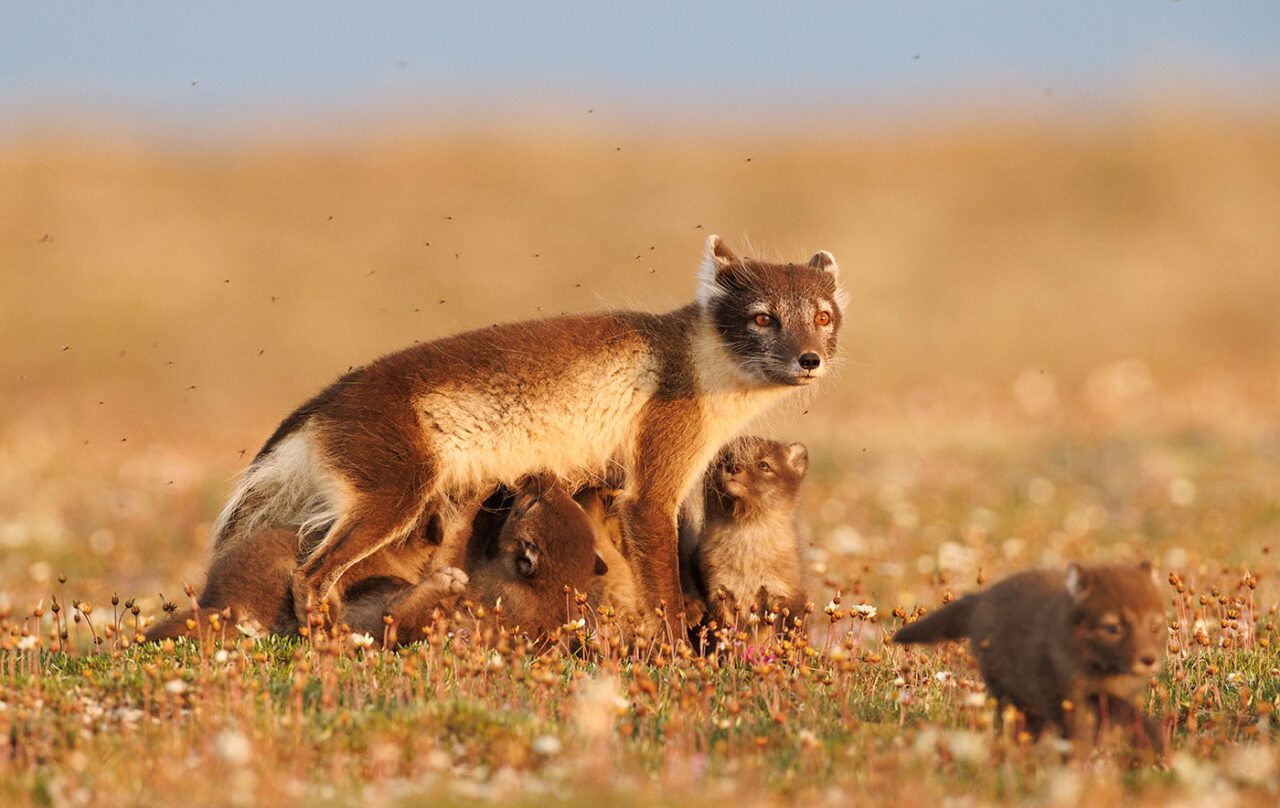
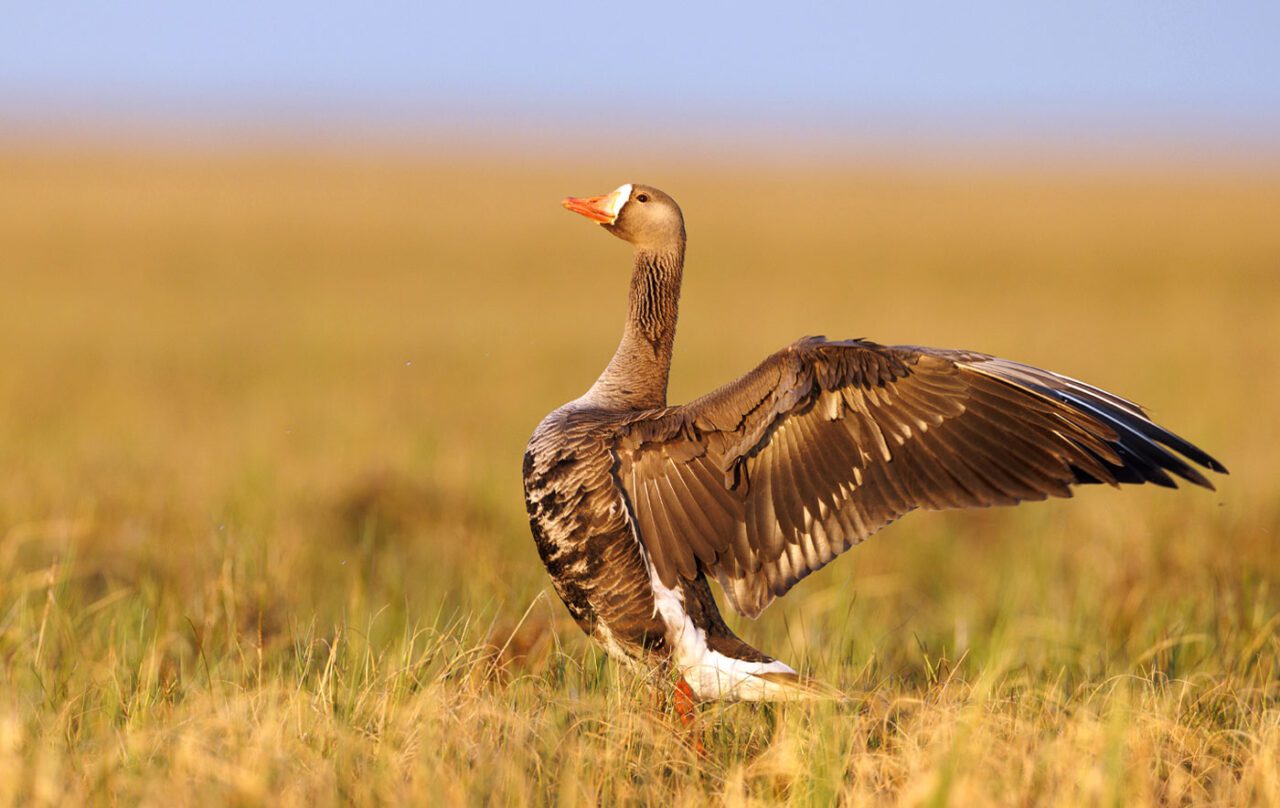
Eventually, all the delicate bird nests cradled in the sedges, mosses, and lichens around our camp came to life and the landscape was full of baby birds. Greater White-fronted Goose chicks—warm, fuzzy, and yellow—followed behind their parents in lines to the relative safety of lakes and ponds. Short-eared Owl chicks lay in a helpless pile, completely dependent on their parents for protection and a steady supply of lemmings and voles. Bar-tailed Godwit chicks emerged from golf-ball-sized eggs and stumbled from their nests on oversized feet and legs; in just two short months, they would depart Alaska on a nonstop flight to New Zealand.
A Paradise of Breeding Birds
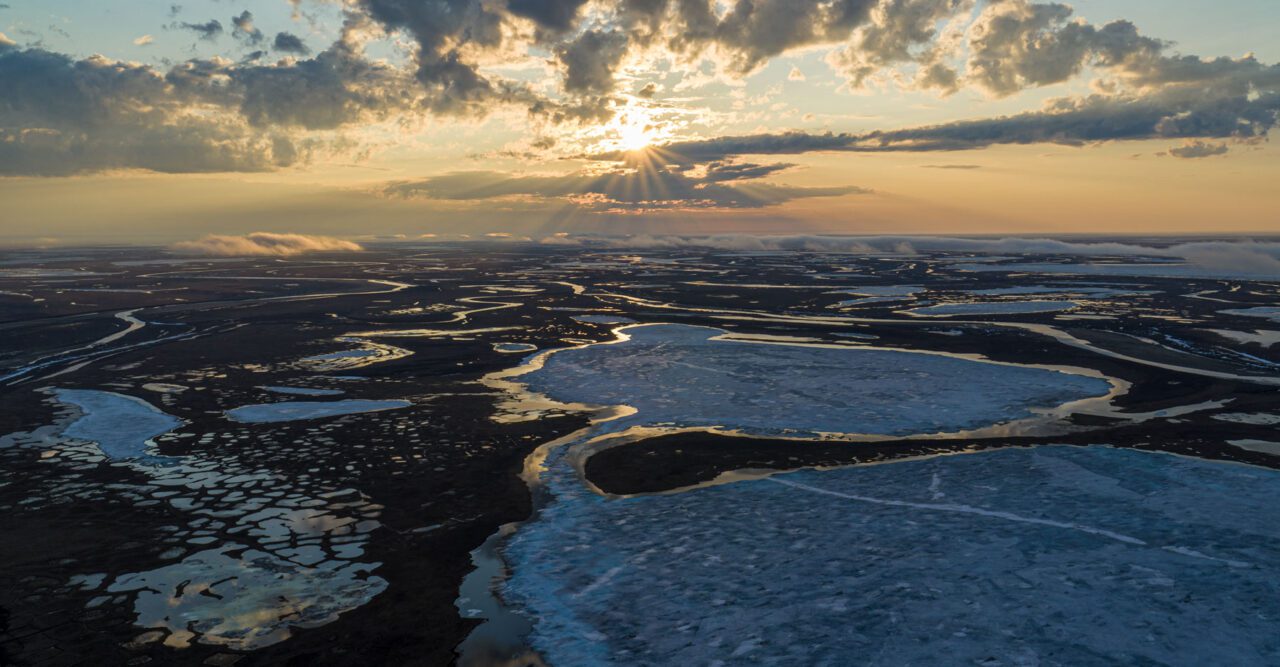
The National Petroleum Reserve–Alaska supports more breeding waterbirds than any other place in the Arctic, with extremely high densities of bird nests concealed within the tundra vegetation.
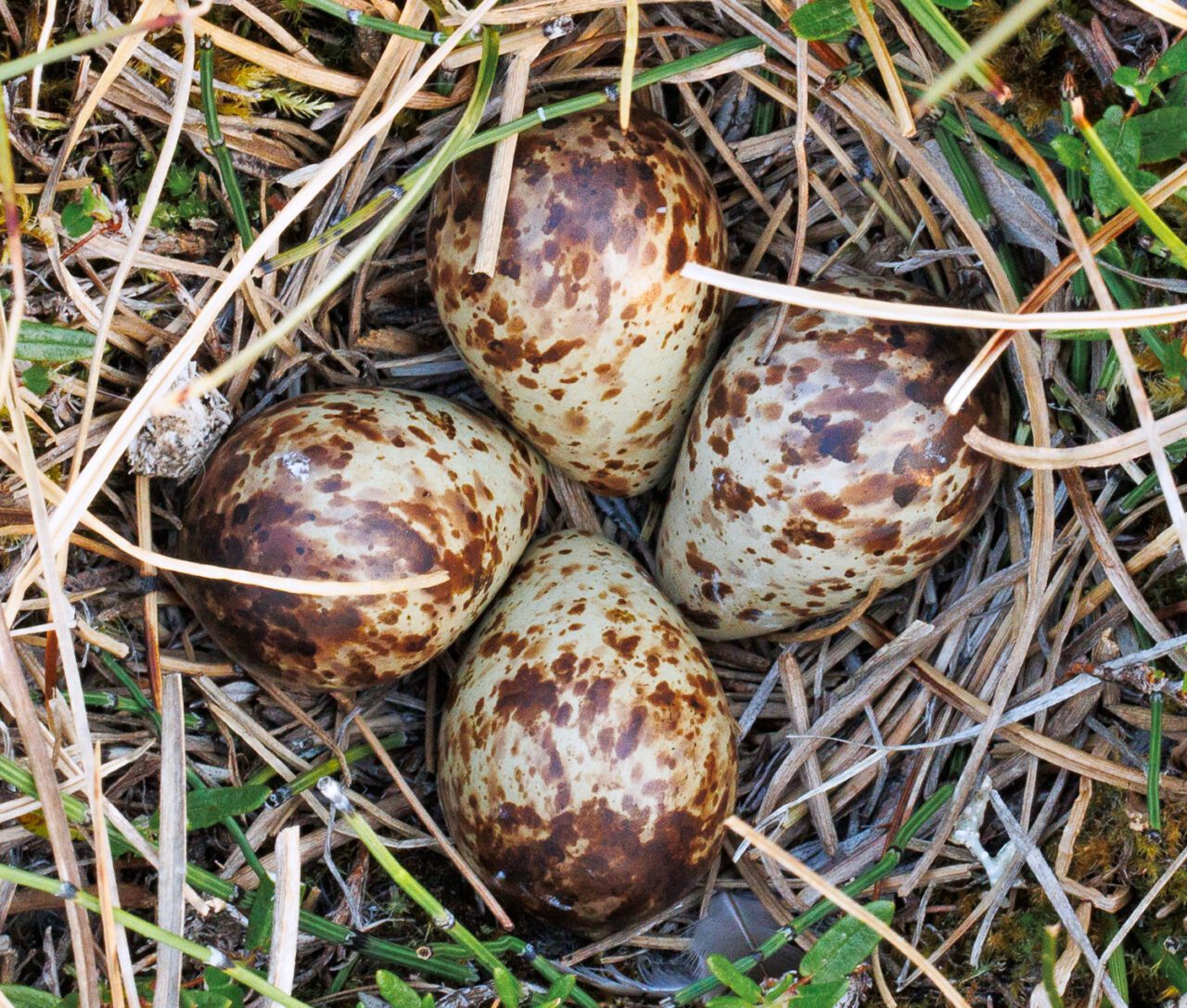
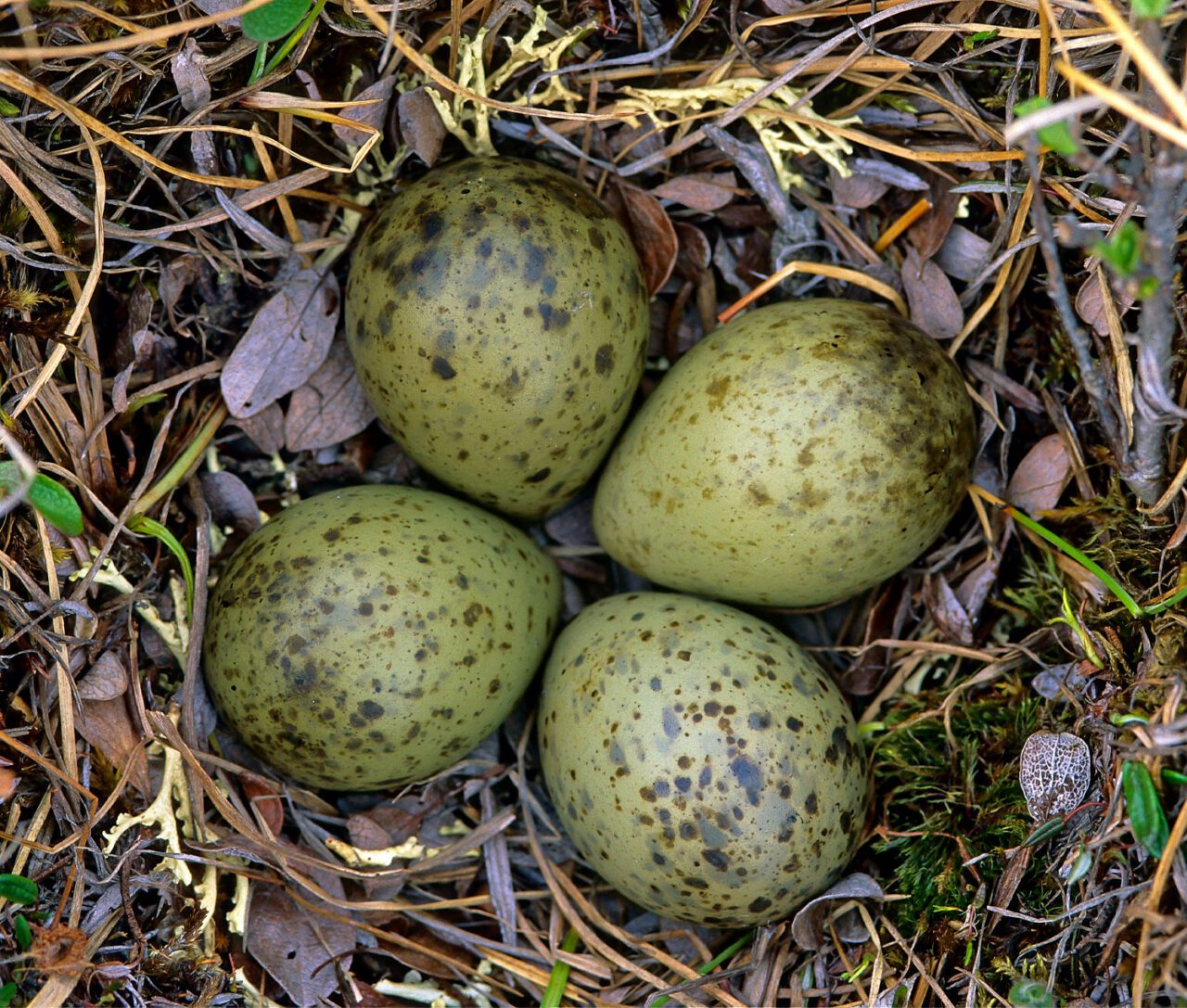
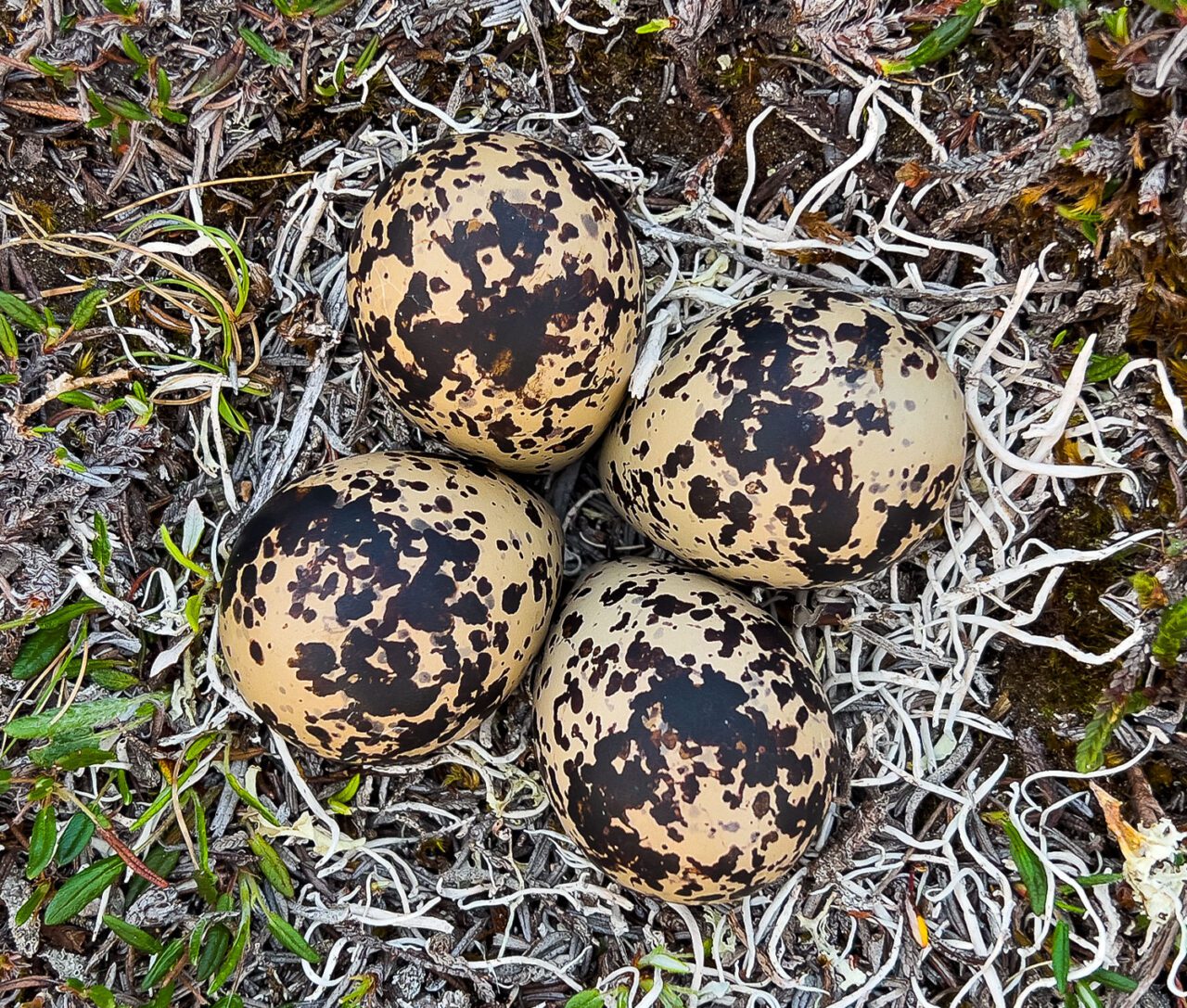
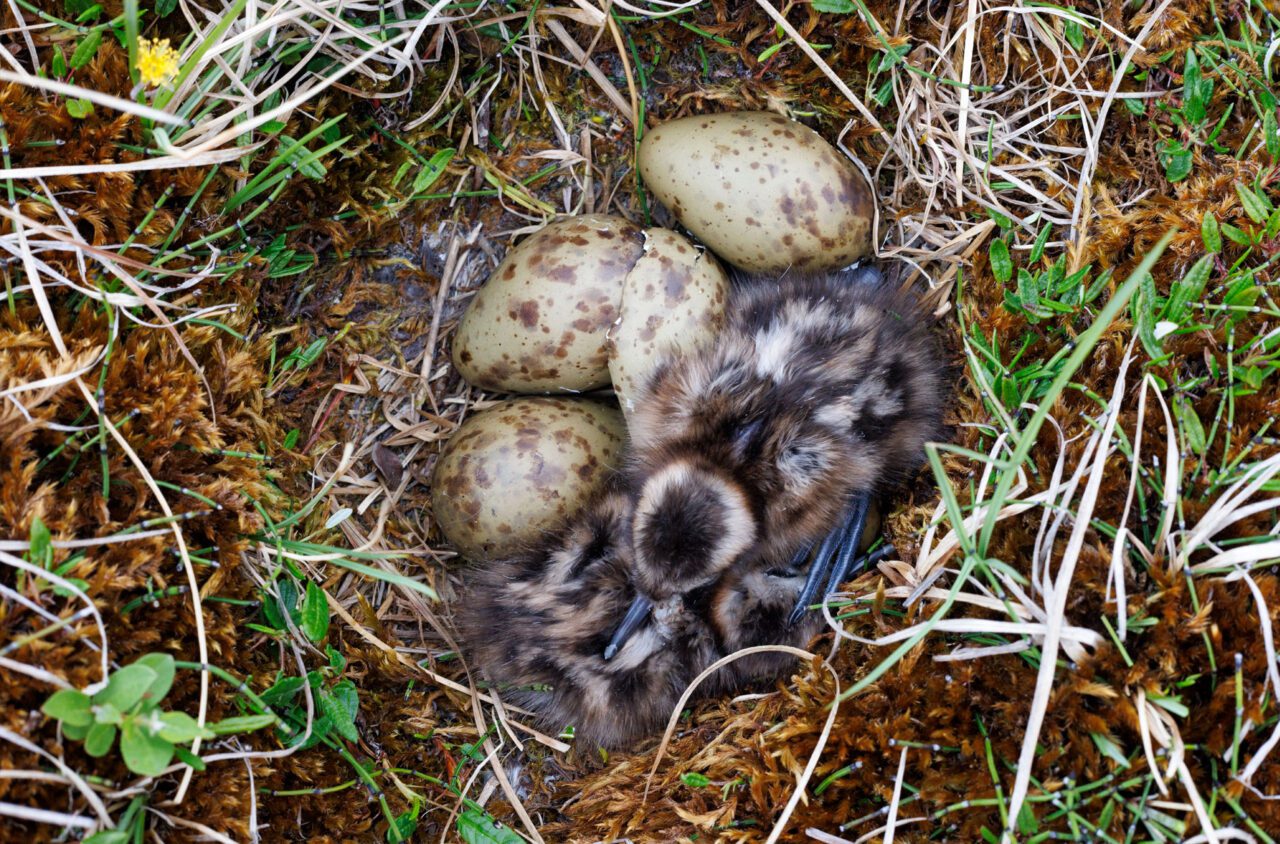
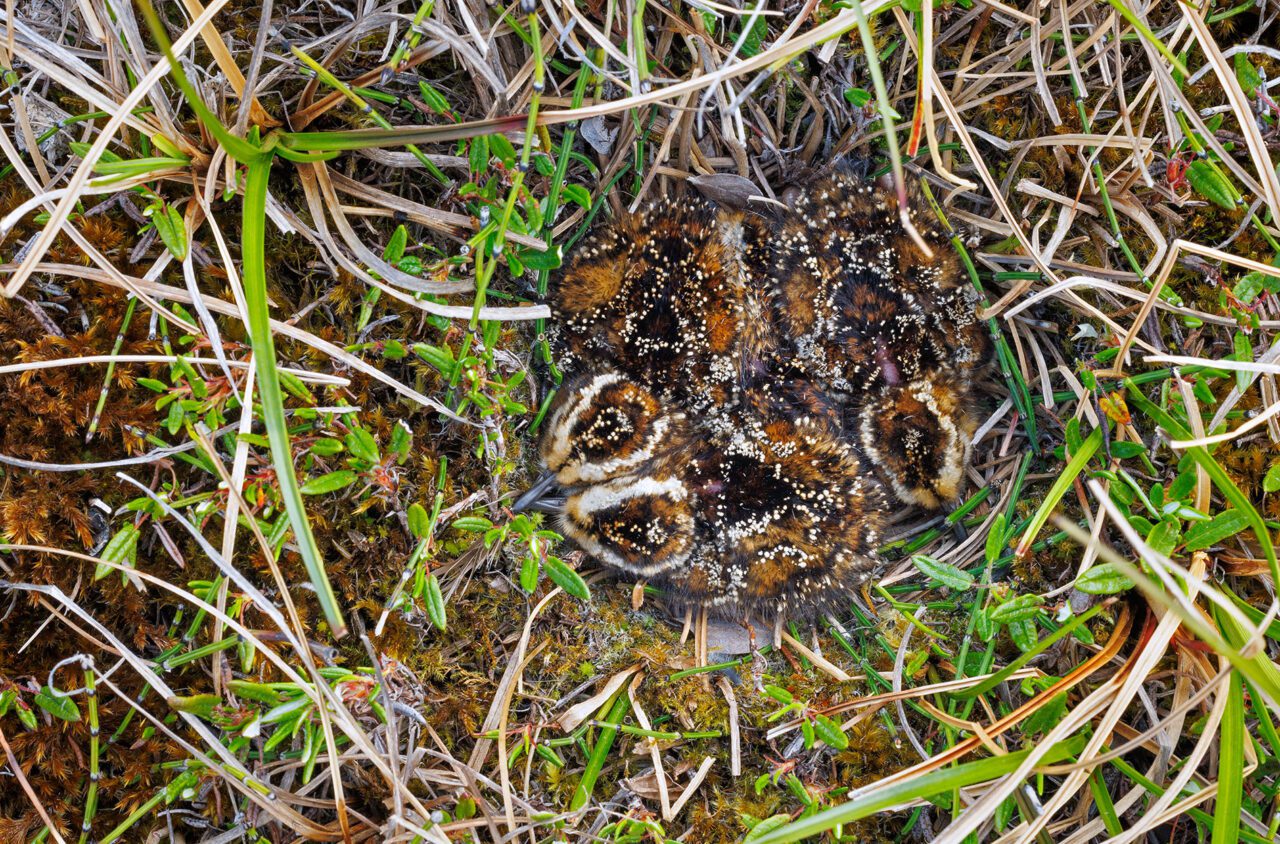
We took it all in, did the best we could to document what we saw with our cameras, and created a body of visual work to help speak for protection of this land and its inhabitants. And this is a land that needs a louder voice.
The Teshekpuk Lake Wetlands have been recognized and protected for decades under Republican and Democratic presidential administrations alike because of their global importance to migratory birds and caribou. They encompass one of the most expansive areas of Arctic wetlands on earth, have some of the highest densities of nesting shorebirds anywhere, and provide the calving grounds and places to escape insects that are vitally important to the caribou of the Teshekpuk Lake herd.
Like other Special Areas in the NPR-A, Teshekpuk Lake has been deemed to have exceptional wildlife values deserving of maximum protection. Ironically, the current presidential administration, poised to leave a legacy on reducing climate disruption, has recently opened the door for these lands, too, to be developed. President Biden’s approval for the ConocoPhillips Willow oil development within the NPR-A gave a green light to what has been described as the nation’s largest new oil development.
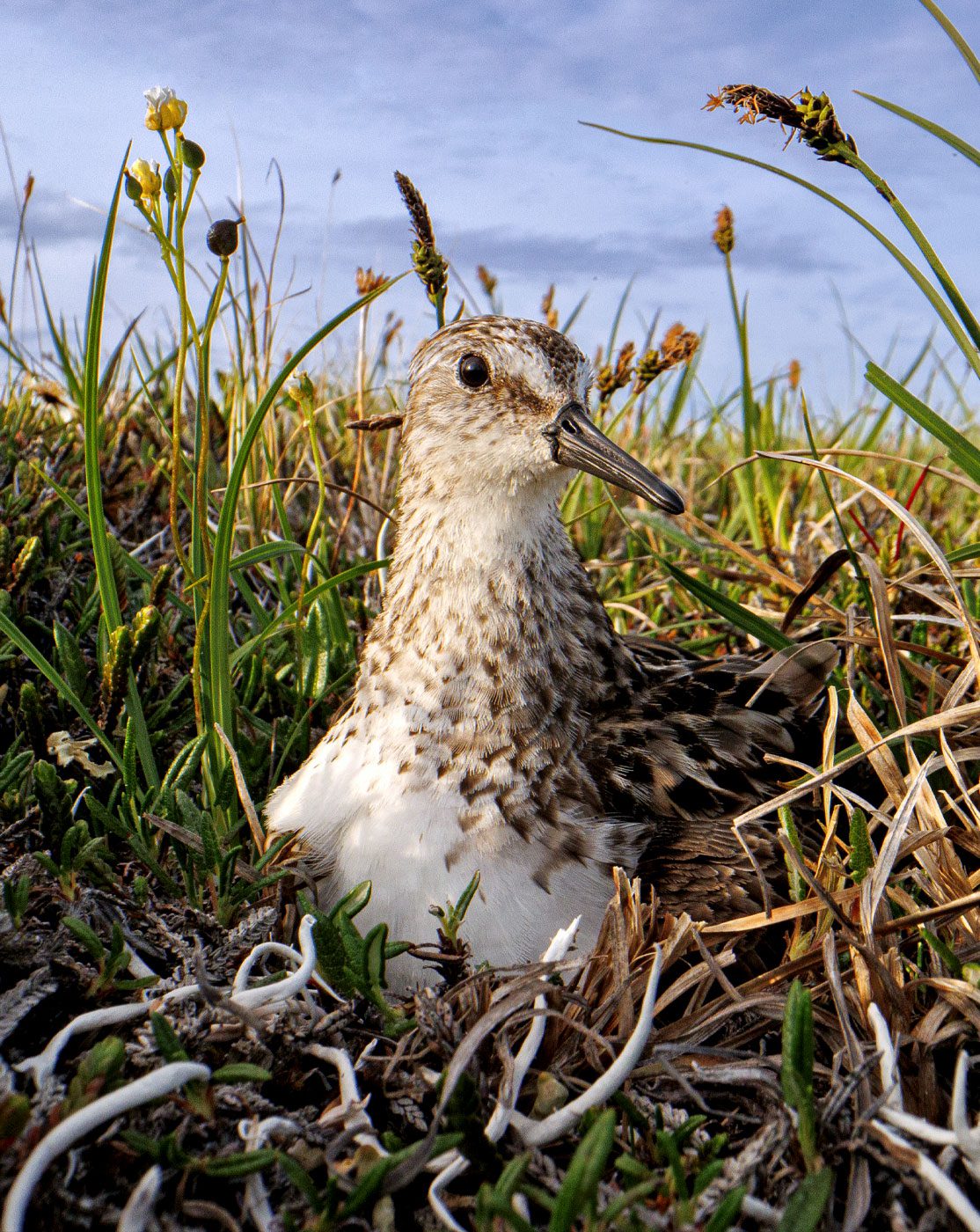
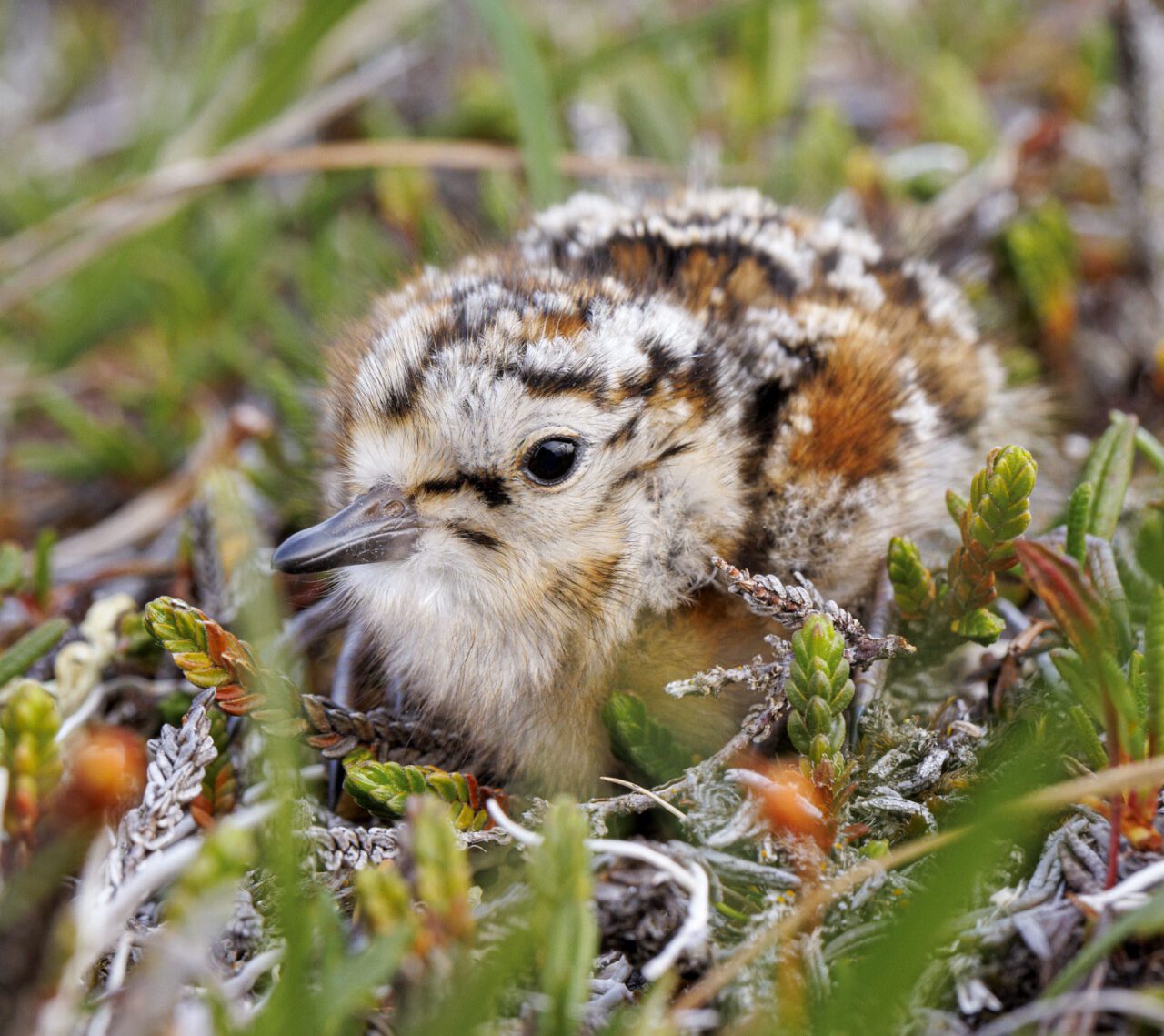
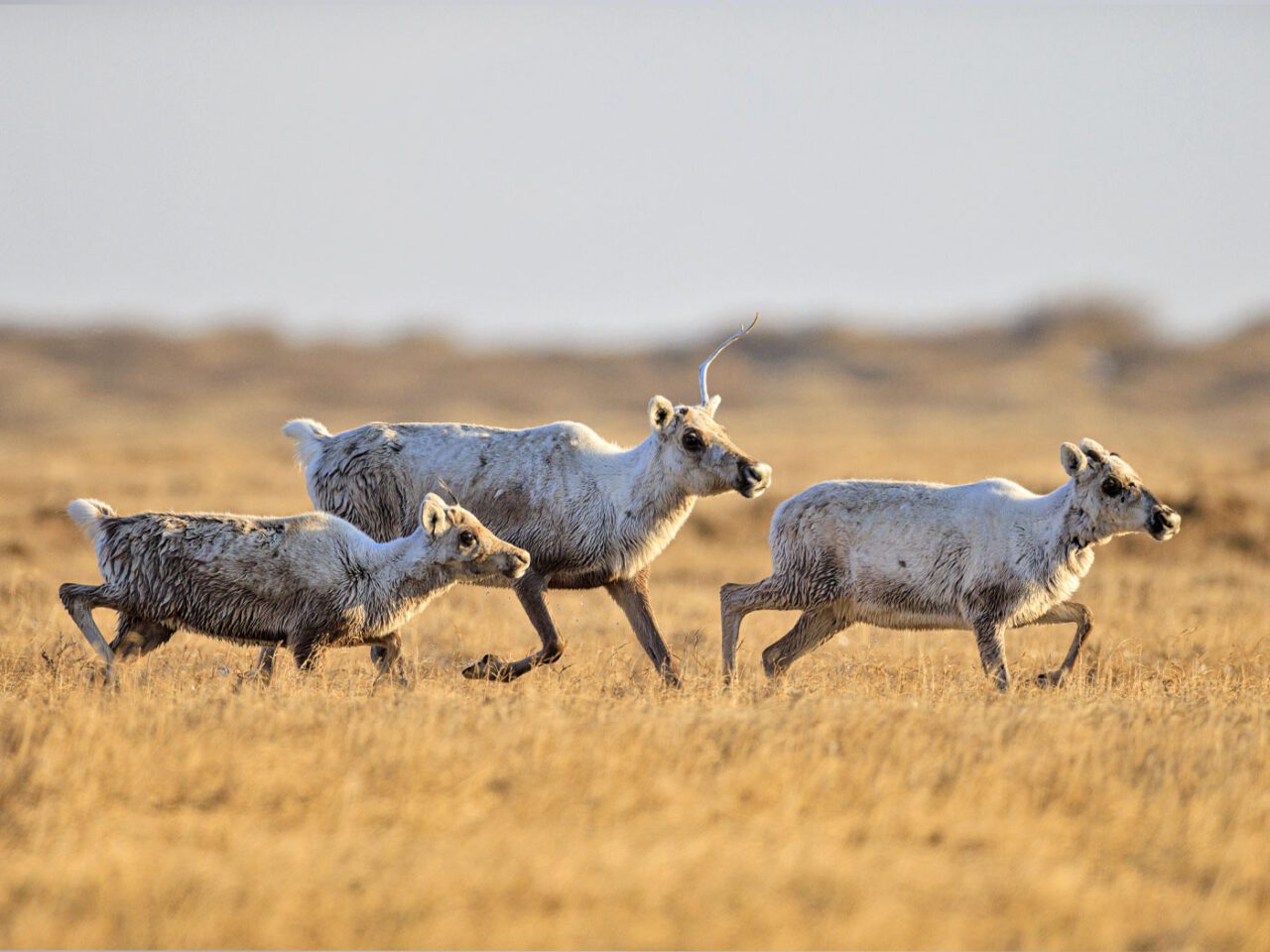
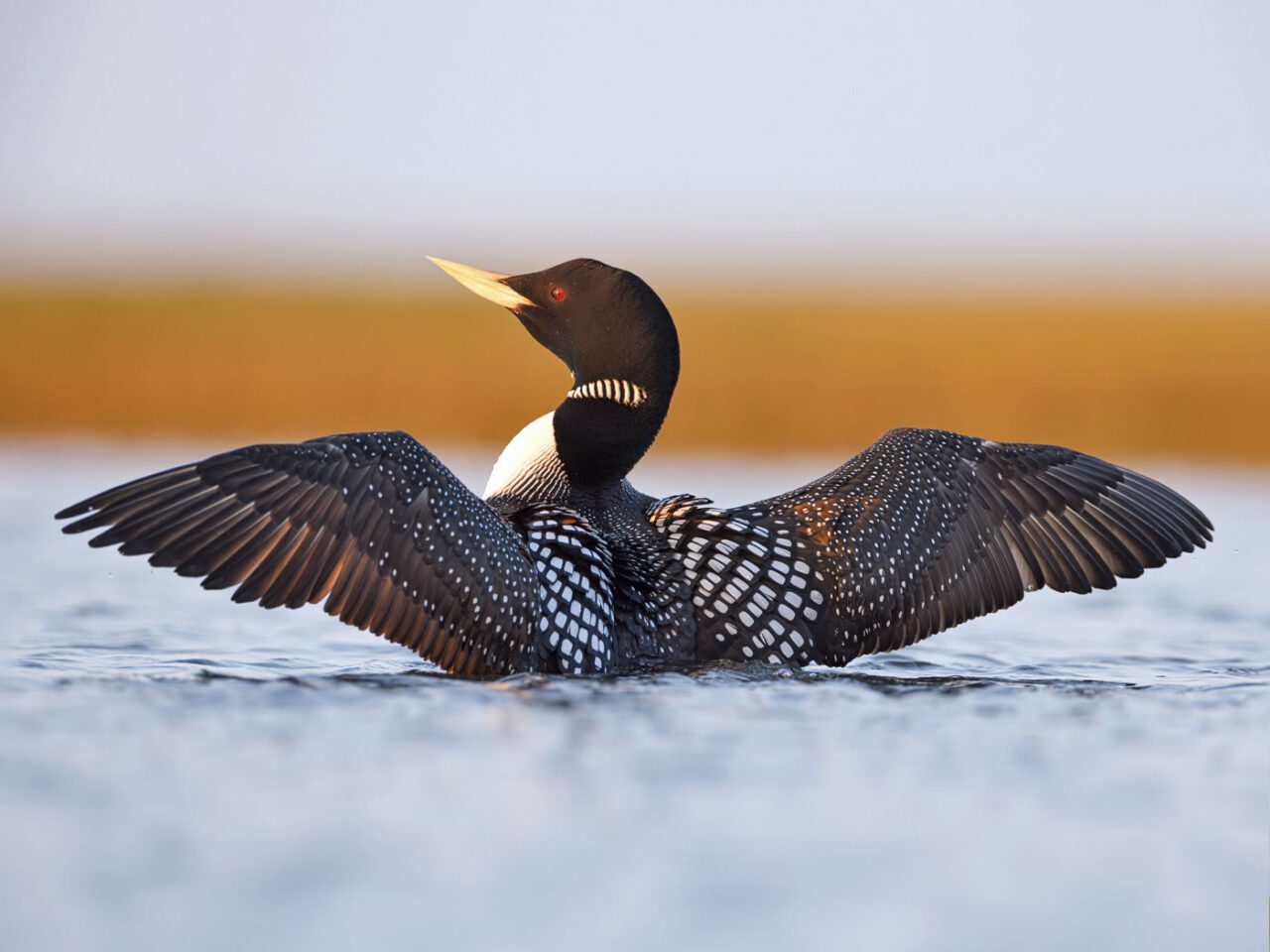
If developed, burning the oil extracted from Willow will release at least 263 million tons of greenhouse gases over 30 years, and that’s after nearly a decade of building the necessary infrastructure for drilling pads—hundreds of miles of roads and pipelines, an airstrip, a mine, and hundreds of wells. ConocoPhillips calls Willow the next big hub for oil and gas, from which they would expand across the NPR-A. Conservationists call it a carbon bomb, a legacy tarnished, and a campaign promise of “no new drilling on federal lands” abandoned.
I may be as naive today as I was when I first laid eyes on this land. The issues are complex and changing day by day. But in a world rapidly coming to the realization that we must move away from fossil fuels, befouling a great wilderness in America’s Arctic at the 11th hour for the modest gains of a few seems absurd.
Though the federal Bureau of Land Management is currently considering new proposed conservation rules and protected areas across the remainder of the NPR-A, these protections are nothing that a new presidential administration couldn’t reverse. Big Oil got the foothold and long-term legal certainties that they have been seeking; the birds and the caribou may get new promises of habitat protection, but none of the current proposals grant protection forever.
Each concession to Big Oil is permanent. Birds and wilderness, in turn, need permanent protections around Teshekpuk Lake and the other NPR-A Special Areas that can’t be undone.
About the Author
Gerrit Vyn is a producer in the Cornell Lab’s Center for Conservation Media and frequently leads natural history filming projects in the Arctic. His involvement in the media-collecting expedition in the Teshekpuk Lake Special Area was made possible through the generous support of Patricia Ryan.

All About Birds
is a free resource
Available for everyone,
funded by donors like you
American Kestrel by Blair Dudeck / Macaulay Library
